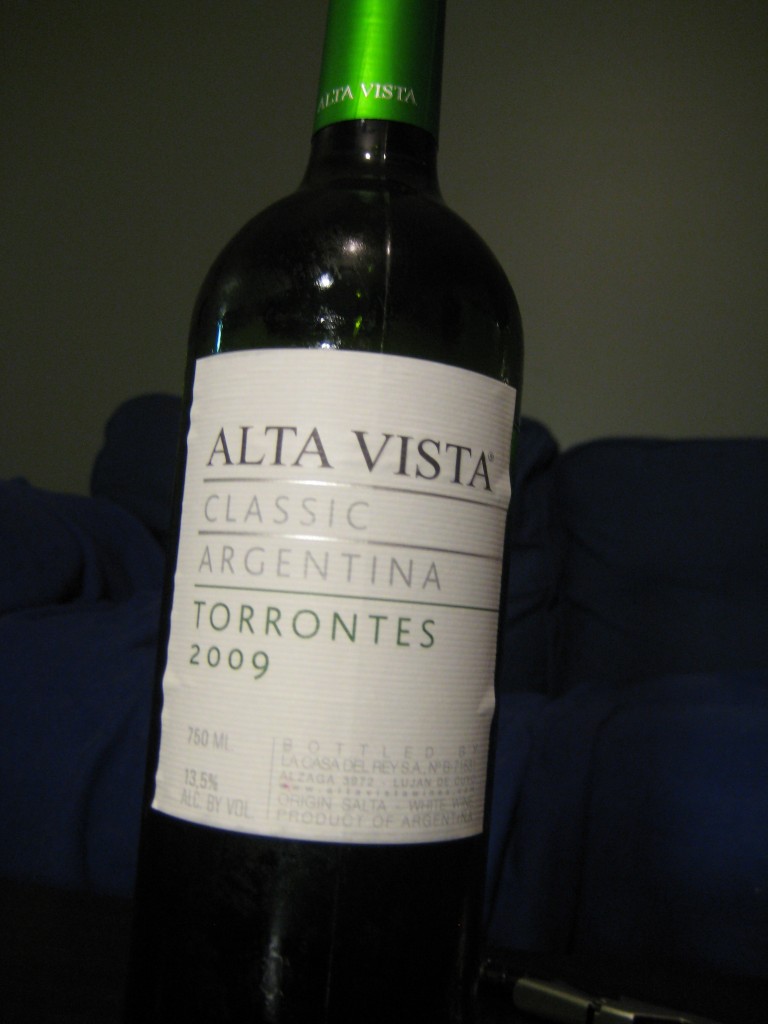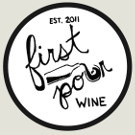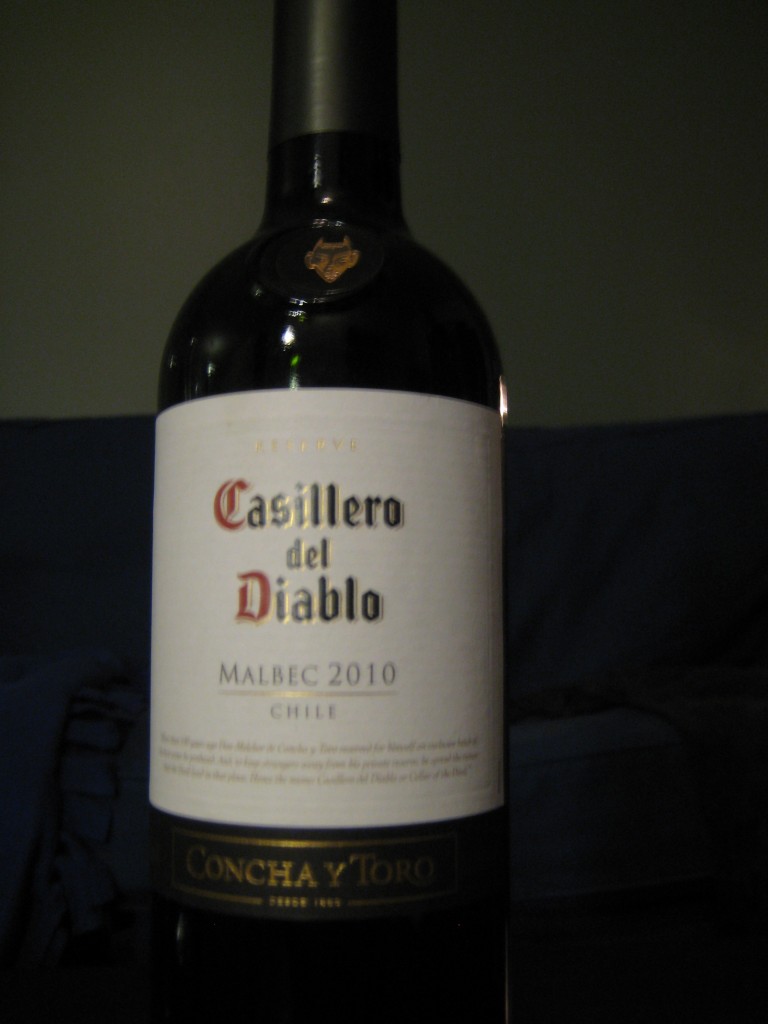Traveling below the equator for this week’s episode to learn more about:
- Chile, or location, location, location!
- Argentina’s specialty white
- 2009 Alta Vista Torrontés
- 2010 Casillero Del Diablo Malbec
Chile, A Country Made for Wine
Chile has one of the most interesting landscapes of any country on the planet, and one that’s uniquely suited for growing grapes. Thanks to the border with the Pacific Ocean, the climate remains relatively stable. To the west, the Andes mountains provide a great source of irrigation during snow melt, and both provide strong influence on weather patterns that effect grape growing. Going north, it’s desert, and south, that’s 400 miles of water leading to a lot of penguins.
The country is so isolated, it has even managed to mostly escape the pesky little parasite Phylloxera, which destroyed most vineyards in France toward the end of the 19th century. Even more so, the grape known as the lost Bordeaux, Carménère, was rediscovered in Chile. It’s an interesting place.
While Chile is known for many great wines, it’s best examples tend to be well structured Cabernet Sauvignon, Merlot, and Carménère. There are also a good number of bargain priced Chardonnay and Sauvignon Blanc, which can range from good to very good in quality for the price. Many of Chile’s wines hovers right around $10, making them easily accessible.
Argentina, made for meat
It seems that in the 70’s and 80’s, all the wine history reads quite similarly. So and so wine region was producing large quantities of quaffable wine, and then all of a sudden everyone woke up, and started shipping quality wine all over the world in a sort of willy-nilly fashion. Of course, there’s a lot more to it than that, but the average consumption in Argentina was 26 gallons, yes, gallons, per person. Which is quite a significant quantity of anything to be consuming.
In Argentina, that changed toward the end of the 90’s, and there were two types of grapes that managed to completely elevate the country to a world class exporter. First and foremost, Malbec. Where Malbec from Bordeaux can be a bit mild to moderate in it’s body and flavors, Malbec from Mendoza Argentina is frequently robust, grippy, deep, and like velvet. While the reasons for this are not completely understood, it is known by the locals that this wine pairs exceedingly well with roasted meat, which the Argentine people also have a reputation for consuming copious quantities of. [Reminder, wine is meant to go with food! Grows together, goes together.]
The other grape which Argentina has a special knack with is Torrontés, a somewhat floral and spicy grape known for racy whites. This grape could best be described as what might happen if Sauvignon Blanc had a child with Gewürztraminer. The wine is floral, citrusy, and acidic, but light, and typically with a bit of terroir. It’s worth noting that Torrontés grows almost nowhere else in the world.
2009 Alta Vista Classic Torrontés

Welcome to the entry level of Torrontés. This is by no means a bad thing, there are plenty of great bargain level entrants, and hopefully 2009 Alta Vista Classic Torrontés can fit the bill. Will this wine punch above it’s weigh with acidity and flavor, or will it just be another one hit wonder?
Sight: A deeper golden color, with a little bit of green.
Smell: Honeydew, lemon, orange, and lots of different citrus greets the nose. There is also a touch of wet stone to round out the character.
Sip: Grapefruit, unripe apricot, and a lot of kumquat explode on the palate with a lot of acidic punch. There’s a nice roundness thanks to the alcohol, and courtesy flavors of guava, wet stone, and starfruit all play their part. [A.B.V. 13.5%]
Savor: Grapefruit and kumquat take the top of podium, while guava and papaya linger behind.
Overall, 2009 Alta Vista Classic Torrontés is quite citrusy. There’s something about it that’s a bit more on the common side, but there’s a pinch of the exotic as well. This isn’t bad, but this wine doesn’t quite fully capture the essence of what a Torrontés can be. That being said, this wine could play a good show for Thanksgiving for the Sauvignon Blanc or Gewürztraminer crowds. Definitely worth a taste for any high acid white lover.
Verdict: Kumquat attack
Price: $7.99
Argentina
http://www.altavistawines.com/
2010 Casillero del Diablo
Malbec is indeed typically most renowned from Mendoza, Argentina, but that doesn’t mean Chile, chameleon grower of grapes can’t produce a good one as well. Concha y Toro is a fairly good brand to give it a go as well, given that their top of line Cabernet helped establish Chile as a producer of high caliber wines. Can their entry level 2010 Casillero Del Diablo provide a similar sensation, or should this one be left with the devil himself?
Sight: Extremely dark with a ruby edge.
Smell: Plenty of cedar, cinnamon, and black pepper on the nose. The oak aromas waft up on the background of blackberries and plums.
Sip: Blackberry, plum skin, and plenty of black pepper make up the palate. Raspberries and a slight smoke play in the background. The mouth feel is moderate with a little bit of heat, and the tannins are firm but not oppressive. [A.B.V. 13.5%]
Savor: Tannins continue to linger, black pepper and blackberry jam round out the ending.
Overall, 2010 Casillero Del Diablo is quite a good Malbec for the price. There’s a lot going on with this wine, and it doesn’t all try to occur at once. There are moments where it will be oaky, and moments where it will evoke memories of blackberry jam and fresh plums. Worth a try for those just getting into wine, or those who just want something they can drink on a regular basis and keep finding new depth in.
Verdict: El diablo bueno
Price: $7.99
Chile
http://www.casillerodeldiablo.com/

